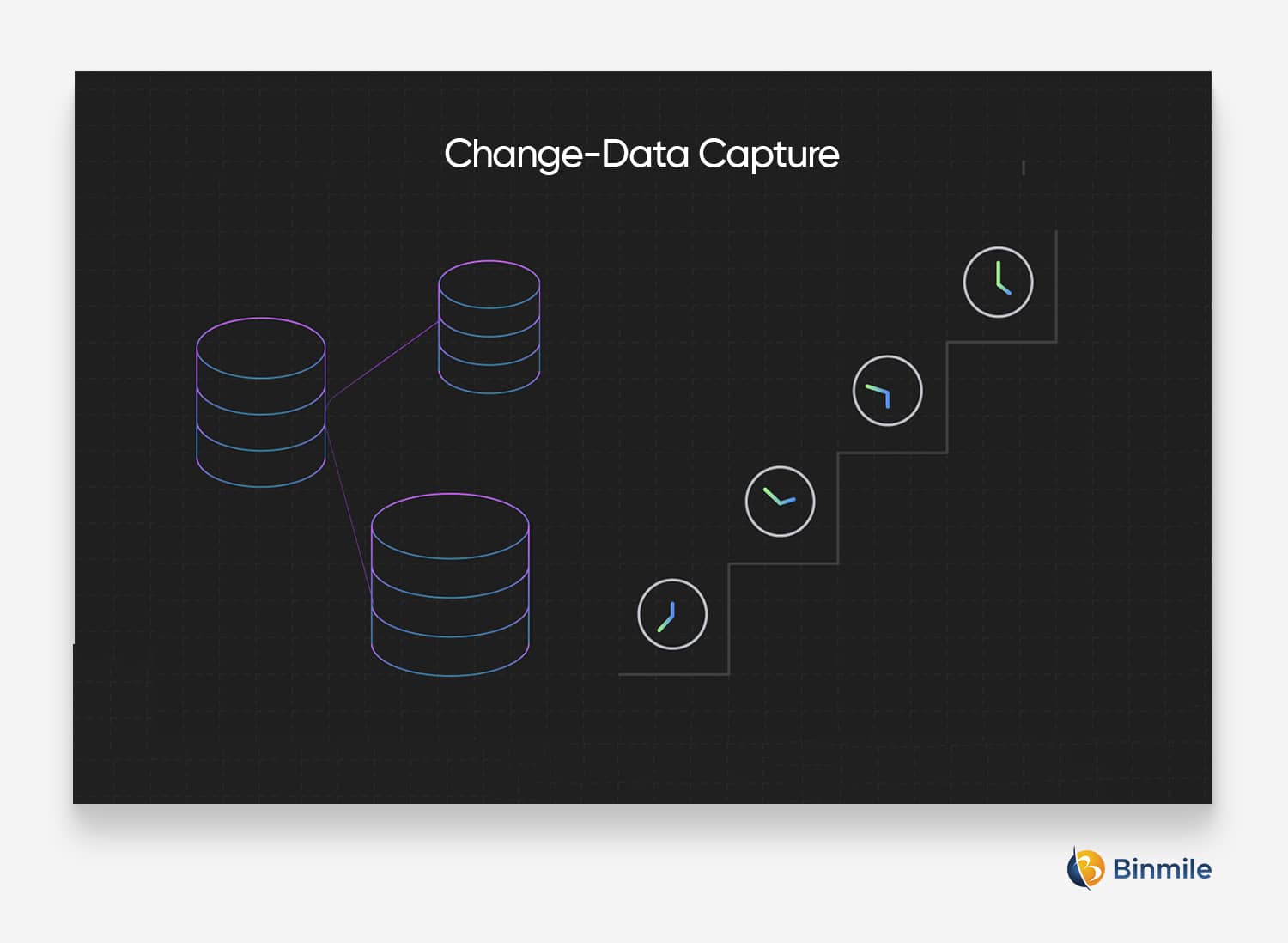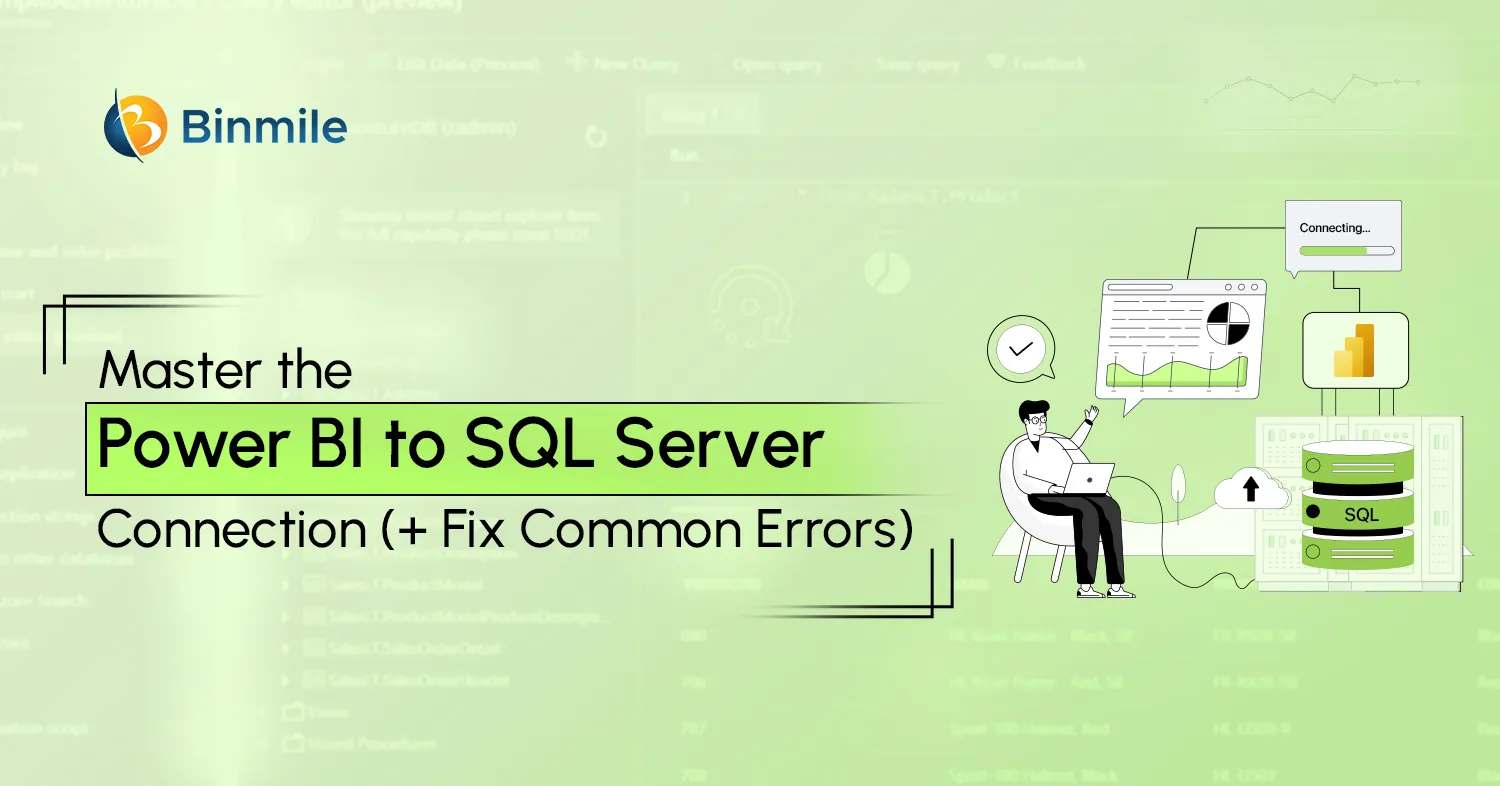Adaptability is paramount in this business landscape defined by rapid transformation. Working on data that is not only inaccurate but also outdated negates the point of utilizing the power of data to optimize monolithic to microservices migration. This is where Change Data Capture (CDC) comes into play. CDC isn’t just a technology; it is a strategic advantage that empowers organizations to proactively embrace change, capture its essence, and wield it as a catalyst for growth.
So, what is change data capture? It is a data management process used to identify and capture changes made to data in relational databases such as SQL Server or Oracle to data warehouses, data lakes, or other databases. CDC is a fundamental process for tracking alterations, additions, and deletions in your data, allowing you to keep your information up-to-date and respond promptly to changes. In this blog post, we will explore what CDC is, why it is crucial for businesses, and how to make the most of it for your legacy application modernization.
Change Data Capture Overview: Benefits, Methods & Strategies to Enhance the Process

Incorporating Change Data Capture into an application modernization strategy can offer significant benefits, ultimately giving your business a competitive edge in a fast-paced and data-driven world. Here are some major benefits of the CDC for your business:
Real-time Data Updates
CDC allows organizations to capture and process changes to data in real-time or near-real-time. This means that as soon as a change occurs in the source data, CDC mechanisms can detect and propagate that change almost immediately. This enables businesses to make informed decisions quickly based on the most up-to-date information available. For example, in the financial industry, real-time stock price updates are crucial for traders to execute timely buy or sell orders, maximizing their investment gains or minimizing losses.
Reduced Latency
Change Data Capture minimizes the time delay between data changes and their availability for reporting and analysis. Unlike traditional batch processing, which may run at specific intervals (e.g., nightly), CDC captures and propagates changes as they occur. This reduced latency is particularly vital for time-sensitive application development where even a slight delay can have significant consequences. In financial services, for instance, low latency ensures that fraudulent activities are detected promptly, helping prevent financial losses and maintain customer trust.
Scalable and Cost-Effective Data Replication
CDC can seamlessly capture and replicate changes in data from source systems to cloud-based databases or data warehouses. This combination allows organizations to take full advantage of the scalability offered by cloud platforms such as Azure cloud services. You can easily scale your data replication processes up or down based on your needs, without the need for significant upfront investments in infrastructure. This combination of CDC and cloud services provides a scalable and cost-effective solution for maintaining synchronized data across distributed environments.
Data Consistency and Synchronization
During monolithic to microservices migration, you often need to ensure that data remains consistent and synchronized across different microservices. CDC can play a crucial role in this process by capturing changes to the monolithic database and propagating them to the respective microservices. It helps maintain data integrity and prevents data discrepancies or conflicts that could arise during the data migration process. This benefit simplifies the data management aspect of the migration and reduces the risk of data-related issues in the microservices environment.
Minimized Resource Utilization
It consumes fewer resources compared to traditional batch processing methods as CDC only processes and transmits changed data. It reduces the load on databases, network infrastructure, and processing resources. This resource optimization leads to cost savings and improved system performance. In cloud computing environments such as AWS cloud services, it can also result in lower operational expenses, as you pay for the resources you use.
Also Read: Data Modernization Strategy for BFSI
Top 7 Strategies for Optimal Change Data Capture Process
Now that we understand what is a Change Data Capture and why CDC is essential, let’s delve into how your business can leverage it effectively:
1. Define Clear Objectives
Begin by engaging with stakeholders to clearly define your organization’s objectives for implementing CDC. These objectives could include reducing data latency, improving data quality, enhancing operational efficiency, or achieving regulatory compliance. So, be specific and measurable in your goal-setting before you start with CDC.
2. Evaluate and Select the Right CDC Tool
Conduct a comprehensive evaluation of change-data capture tools available in the market. You need to consider factors such as compatibility with your data sources (databases, applications,) scalability to handle data growth, ease of integration with your existing systems, and the total cost of ownership. Engage with vendor evaluations, conduct proof-of-concepts, seek recommendations from industry peers, and select the right tool.
3. Identify and Prioritize Data Sources
Create a comprehensive inventory of all your data sources, categorizing them based on their significance to your business. Prioritize sources that are mission-critical or have a pivotal impact on your objectives. This prioritization helps you allocate resources effectively. Within your chosen CDC tool, set up detailed data capture rules and specify precisely what data changes should be monitored and how they should be captured. This includes defining which tables, fields, or data objects to track, and the conditions triggering capture (e.g., inserts, updates, deletes).
4. Implement Data Transformation and Enrichment
Develop robust data transformation and enrichment processes as part of your change data capture implementation. These processes ensure that the captured data is not only accurate but also formatted correctly and enriched with relevant contextual information. Data enrichment may involve merging data from different sources or applying business logic to enhance the value of the captured data.
5. Integration with Target Systems
Incorporating with target systems involves moving and synchronizing data from source to target systems efficiently, ensuring that the right data is available in the right place at the right time. Ensure that the captured data flows smoothly into data warehouses, reporting tools, or other applications that rely on this data. Design data pipelines that maintain data consistency, integrity, and accuracy during integration. Together, CDC and integration enable organizations to keep their data up-to-date and support various data-driven processes, from data analytics to reporting and decision-making.
6. Implement Robust Security Measures
Prioritize data security in your CDC implementation and utilize robust security measures to safeguard the integrity and confidentiality of the data being captured. This involves encrypting sensitive data both in transit and at rest, and enforcing stringent access controls to limit data access to authorized personnel only. These security measures not only protect the integrity of the CDC process but also ensure compliance with data protection regulations, fostering trust among stakeholders and customers alike.
7. Continuously Monitor, Optimize, and Evolve
Implement a robust monitoring and alerting system to continuously track the performance of your CDC implementation. Identify and address bottlenecks, latency issues, or data errors promptly. Regularly review and optimize configurations, such as batch sizes, polling intervals, or network bandwidth, to ensure optimal performance. Be prepared to adapt your CDC strategy to changing business needs, evolving technology, and emerging best practices. You can also do this by regularly engaging with your CDC tool vendor for updates and enhancements to keep your implementation up-to-date.
Also Read: Database for Web Apps
Change Data Capture Methods: How CDC Works
There are three major ways through which you can change data capture systems. As an organization, you can choose the method that aligns best with your specific use cases and infrastructure:
- Log-based CDC: It relies on database transaction logs, which record all changes to the data in real-time. CDC tools continuously monitor these logs and capture the changes as they occur. Since it captures changes directly from transaction logs, it provides highly accurate and up-to-date data. It doesn’t impose a significant load on the source database, making it an efficient method.
- Query-Based CDC (Polling-Based): Query-based CDC, or polling-based CDC, involves periodically querying the source system to identify changes since the last query. It compares timestamps or unique identifiers to detect changes. It is relatively simple to implement and can work with a wide range of databases and compared to log-based CDC, it places a lower load on the source system.
- Trigger-Based CDC: It is a method that relies on database triggers, which are database objects that automatically execute when specific events occur. These triggers are set up to detect changes to specific tables or data objects. Like log-based CDC, it offers real-time change capture which allows organizations to have fine-grained control over which tables or objects trigger changes.
Optimize your data integration with change data capture to maintain a competitive edge, gain faster insights, and make smarter decisions

Utilize Change Data Capture With Us
CDC remains a valuable tool for organizations looking to maintain data accuracy and enable real-time analytics. Therefore, Change Data Capture is more than just a data management tool; it is a strategic asset that empowers businesses to thrive in an ever-changing landscape. Whether it is a monolithic to microservices migration or the utilization of cloud development services, CDC enhances data management, efficiency, and reliability.
Hopefully, this article empowers you to harness the power of CDC in tandem with modern architectural and legacy application modernization strategies. Doing so will enable your business to navigate the ever-evolving data landscape with efficiency, efficacy, and agility to stay ahead of the competition.
Are you ready to discover how our digital transformation services can provide solutions for your CDC needs? Get in touch today and see how we can help you reach your goals.
Frequently Asked Questions
CDC works by monitoring specific database operations such as inserts, updates, and deletes. When a change is detected, the system logs the modifications and then propagates them to other systems or databases, often in real-time
The benefits of Change Data Capture include:
- Real-time data synchronization: Ensures that data is always up-to-date across various systems.
- Improved performance: Reduces the need for full data replication, minimizing resource consumption.
- Cost-efficiency: CDC helps avoid extensive, time-consuming batch processes.
- Enhanced decision-making: By capturing and processing data changes in real-time, businesses can make timely and informed decisions.
Several Change Data Capture tools are available to help organizations implement CDC efficiently. Some of the most commonly used tools include:
- Debezium: An open-source CDC tool that supports various databases like MySQL, PostgreSQL, and MongoDB, allowing for real-time data streaming.
- AWS Database Migration Service (DMS): A cloud-based CDC tool that supports data migrations and continuous data replication across AWS services.
- Talend: A powerful data integration tool that includes CDC features to handle real-time data changes.
- Oracle GoldenGate: A comprehensive CDC solution for real-time data replication and integration, designed for Oracle and other databases.
- HVR: A tool designed for high-volume, real-time CDC, particularly useful for large-scale enterprises managing complex databases.











